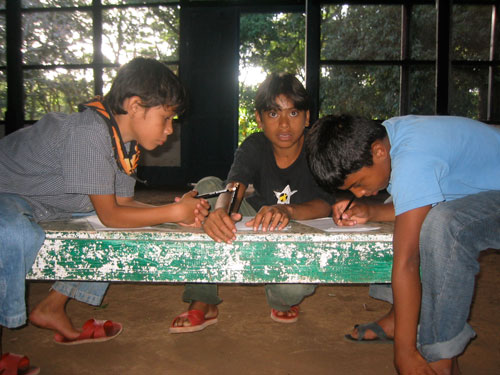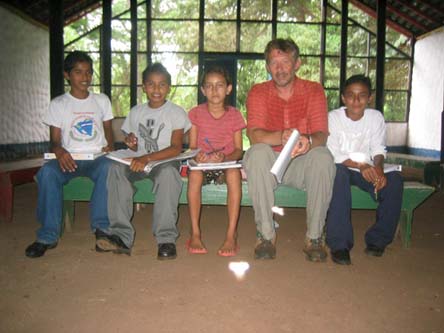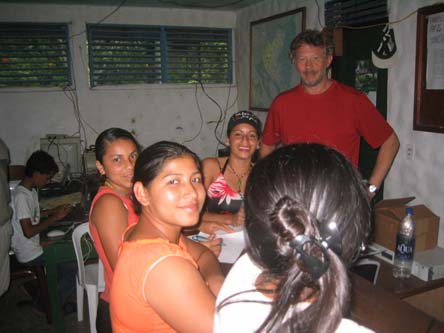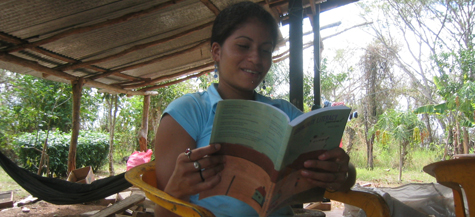Northerly Island:

DePaul University, Chicago & Impractical Labor in Service of the Speculative Arts (ILSSA)


In my WRD103 and 104 courses this year we discussed Alexei Jawlensky’s 1910 painting, Girl With the Green Face as an exercise in textual and contextual analysis, with an eye toward meaning: what does it mean?
 The painting seems particularly well suited for that kind of analysis and reflection: its subject is ambiguous (she is, in fact, a girl with a green face); Jawlensky isn’t the most well known of painters, making research that much more difficult; and the painting hangs here in Chicago, at the Art Institute, where, in Gallery 392 in the new Modern Wing, it is surrounded by much more well known artists and paintings.
The painting seems particularly well suited for that kind of analysis and reflection: its subject is ambiguous (she is, in fact, a girl with a green face); Jawlensky isn’t the most well known of painters, making research that much more difficult; and the painting hangs here in Chicago, at the Art Institute, where, in Gallery 392 in the new Modern Wing, it is surrounded by much more well known artists and paintings.
We initially discussed methods of analysis and meaning-making and compared them to the ways we discuss textual artifacts:
(more…)







[more]
Busboys and Poets, a bookstore, gallery, and restaurant at 14th St and U Ave., is named for Langston Hughes, who worked as a busboy at the Wardman Park Hotel in the 1930s, prior to gaining recognition as a poet.
This reading took place in the expansive and beautiful Langston Hughes Room.

From the restaurant’s site:
In the early 1920’s Hughes resided in Washington DC where he worked as a busboy at the Wardman Park Hotel. Working at the Hotel, located at 2660 Woodley Road, NW, resulted in a stroke of good luck for the money-strapped Hughes. Nicholas Vachel Lindsay, the famous Russian poet, stayed there. Due to the City’s segregated policy, Hughes could not attend the poet’s reading in the auditorium. However, using the ingenuity characterized by his fictional creation, Jesse B. Semple, Hughes hatched a plan. After writing out three of his poems, “Jazzonia,” “Negro Dancers,” and “The Weary Blues,” on a piece of paper, he placed them beside Lindsay’s dinner plate one evening. As he picked up trays of dishes, Hughes saw Lindsay reading them. That night, Lindsay read Hughes’ work with his own. The next day, in local newspapers, Lindsay informed the world of his discovering a “Negro busboy poet.”
Shortly thereafter, Hughes gained nationwide fame when an interview by reporters appeared in The Associated Press.
Environmental and nature art by K-12 students from around Michigan is currently on display in the Youth Gallery of the Copper Country Community Art Center (CCCAC) in Hancock.

The art in this exhibit represents a wide range of entries to the River of Words Poetry and Art contest, a national Library of Congress and River of Words project coordinated at the state level by the CCCAC staff. Each year, in affiliation with The Library of Congress Center for the Book, River of Words conducts a free international poetry and art contest for youth on the theme of watersheds. The contest is designed to help youth explore the natural and cultural history of the place they live and to express, through poetry and art, what they discover.
The River of Words exhibit will be on display though July 3. The Community Arts Center is located at 126 Quincy Street, Hancock. For more information call 482-2333 or e-mail ccarts@chartermi.net.
Our Science Research Team Leader, Amanda Taylor (first-year, Chemical Engineering), is quoted in the February 2009 issue of Environmental Health Perspectives, a journal dedicated to research on the impact of the environment on human health.
Our project is also discussed in the 3.3.09 issue of Science News: “Getting The Dirt On Carbon.”
Learn more about our project here: terrapreta.mtu.edu.
I met my collaborator and friend Rong Shang — poet, calligrapher, and artist — for the first time in person, in San Francisco in December.
Two poems by me, translated by Ruiquan Deng, Beijing Teacher’s University, calligraphy by Rong Shang.

“Gardening”

“Valentine”


Sunday, September 14th, 11:00 a.m. – 1:00 p.m.

Putting pen to paper, or fingers to the keyboard, in the service of sustainability, community, and nature is a powerful act. This is an opportunity for you to share your current writing related to nature and community.
All genres are welcome — poetry, fiction, creative nonfiction, song lyrics, technical reports, impeachment proceedings, grants, autobiographies, personal narratives, etc. — in any stage of drafts or completeness.
We will also discuss venues for publishing if you desire wider audiences for your work.
More info, via the Keweenaw Sustainability Project.
Reading the Landscape
Summer 2008 Writing Workshop
Boston Pond and the Paavola Wetlands Reserve
Saturday July 19th, 9:00 a.m. – 2:30 p.m.
Sponsored by
Gratiot Lake Conservancy
Keweenaw Land Trust
Workshop Leaders
Michael Moore
Heather Wright
Michael and Heather will lead participants on a nature walk and a writing workshop in and around Boston Pond and the Paavola Wetlands Reserve. Discussions along the way include the kinds and causes of environmental change—some natural, some human-made—in these local ecologies. While visiting the sites, we also discuss the technical, environmental, and figurative language we use in apprehending and describing nature. No previous formal writing experience is necessary and writing journals are provided.
Solentiname is a remote archipelago consisting of 36 islands in the southern area of Lago de Nicaragua, 25 miles from Costa Rica. (You can see Costa Rica’s Rincón de la Vieja active volcano range from Solentiname.) I spend most of my time on Mancarrón—the most populated island with about 33 families and 279 people—and make day trips via canoe to visit students and families on smaller and less-populated San Fernando and La Venada. The islands have no standard electricity sources, cars, or roads. The economy is based largely on subsistence farming and fishing, and there’s a small but active artists’ collective.
 My most recent visits have been spent living with community members, teaching ESL and poetry workshops and preparing projects in renewable energy resources. In March I met with faculty and students in the Agricultural Economics Program at La Universidad Paulo Freire in San Carlos, on the mainland about three hours from Solentiname, and gave a presentation on “The Political Economy of Reading and Writing—Literary, Technical, Environmental—In and Around La Reserva Natural de los Guatusos.“ One outcome of that collaboration is a trail redesign and remediation project in a wetlands area of Los Guatusos that I will organize and help lead in the summer of 2013.
My most recent visits have been spent living with community members, teaching ESL and poetry workshops and preparing projects in renewable energy resources. In March I met with faculty and students in the Agricultural Economics Program at La Universidad Paulo Freire in San Carlos, on the mainland about three hours from Solentiname, and gave a presentation on “The Political Economy of Reading and Writing—Literary, Technical, Environmental—In and Around La Reserva Natural de los Guatusos.“ One outcome of that collaboration is a trail redesign and remediation project in a wetlands area of Los Guatusos that I will organize and help lead in the summer of 2013.

Other projects include installing solar panels for both community buildings and for family homes and consulting on the islands’ preparation for an anticipated increase in “eco-tourism,” an issue of pressing concern for technical, cultural, and economic reasons on the islands; some obvious, some not. The people I work with here are rightfully ambivalent about the prospect, so we’re able to work on the planning at a pace dictated by community members. Nicaragua is barely in control of many of its own natural resources, and remote regions such as Solentiname and the Rio San Juan River are sites of increasing global and multinational financial influence. Local community and indigenous rights compete against those less-than-transparent financial initiatives, and part of the current struggle is learning how to protect cultural resources and the community, collective ownership of resources.
“We’re going to decontaminate Lake Nicaragua.
The humans weren’t the only ones who longed for liberation.
The whole ecology had been calling out. The Revolution
also belongs to lakes, rivers, trees, animals.”
— Ernesto Cardenal, from “The New Ecology,” 1979
For example, another summer project is to pilot a biochar plot on one family’s farm. Biochar is a prime candidate for the mitigation of climate change as it replaces the “slash-and-burn” tradition in farming, especially in Central and South America.

If used as the central ingredient of a holistic development approach, biochar soil offers an opportunity to help end hunger among communities at the forest margins; it can also help slow deforestation.
One of the highlights of my most recent trip was delivering copies of the Community Literacy Journal, which I co-edit with John Warnock at the University of Arizona, to three young poets whose work we published in the Spring 2008 issue.


Built in 1966 by Ernesto Cardenal — Jesuit priest and former Nicaraguan Minister of Culture — the church was home to participatory community gospel readings and discussions in the 1960’s and 70’s. Some of the participants of those readings were involved in the first Sandanista military action as citizen revolutionaries against the Somoza regime, in October 1977.

Five community members — three farmers, two fishermen — now considered martyrs in Solentiname, were captured, tortured, and killed; every building and home on the island–except the chapel, which remained undamaged–were destroyed during Somoza’s bombing and destruction in retaliation. This aspect of my community literacy work–working with people who remember this recent history and the power of language that preceded and followed that violent period–often challenges what I know about teaching, but also confirms what I know about people’s capacity to learn from each other and to develop collective expertise.
Regular church services are no longer held here in the church, but poetry workshops are still occasionally conducted by Cardenal during visits from Managua, and I hold most of my workshops and classes there.
Want to help?
An alliance organization that I’ve formed — the Jícaro Collective — to connect students at the University of Central America (UCA) with environmental engineers in Managua and people with whom I work in Solentiname is not soliciting funds at this time, but we do need books in English and in Spanish and computer equipment for students and their parents. If you can help in this way, please let me know: mmoore46@depaul.edu.